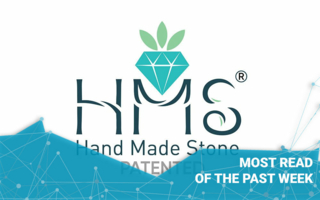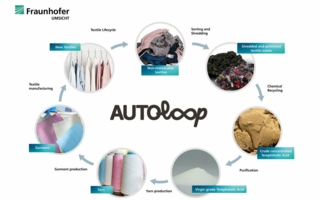20/12/2017 – Exklusive-series: industrie 4.0 explained – part 5 — auf Deutsch lesen
Textile factory of the future
About the various aspects of digitization and the vision of the textile factory of the future.
The entire production process is presented considering the challenges and opportunities arising from current developments. Digitization is gaining importance in companies, investments with reference to Industrie 4.0 are growing. Digitization is finding its way, also within the textile industry. The products of the textile factory of the future will have a customized design and therefore they will correspond with the trend of mass customization. Classic textile products such as bedding, clothing, sports and recreational textiles are printed individually; even the use of 3D printing for the application of three-dimensional elements is possible. Additional functionalities are obtained through the implementation of sensors and actuators, which also allows the interaction with a smartphone to expand the functional range. For the design of customer-specific smart textiles, online product configurators are available, in which the product can be compiled under defined framework conditions. Configuration options are possible with regard to raw material, fabrication process, print patterns, finishing, 3D structures or even electronic components.
For the configuration of the product the customer has two options, either configuring the product himself or choosing from user-specific suggestions, which are generated on the basis of the customer's online user profile and previous bestsellers. After completion of the configuration the order is triggered, the product is paid online directly and then the configuration is sent to the textile factory of the future. Using different algorithms and converters, the system computes machine parameters and resource requirements from the product configuration, converts print patterns into machine-readable data and transfers 3D applications to print paths. The employee takes over a monitoring function and only intervenes indirectly in the data transformation by means of random checks. To make this possible it is necessary to digitize the expert knowledge of the technologists and to integrate it into a technology modeling tool. All possible combinations as well as input-output relations are mapped to ensure that the translation algorithm interprets all necessary data correctly.
by Sten Döhler1, Andreas Böhm2, Robert Mothes1; 1Sächsisches Textilforschungsinstitut Chemnitz e.V. (STFI), 2futureTEX Management GmbH
In the previous issues different aspects of digitization were featured and specified. In the last part of the Exklusive-series: industrie 4.0 explained - Digitization is finding its way the various aspects of digitization are brought together and a vision of the textile factory of the future is developed. Read more in our printed issue textile network 11-12 2017.





